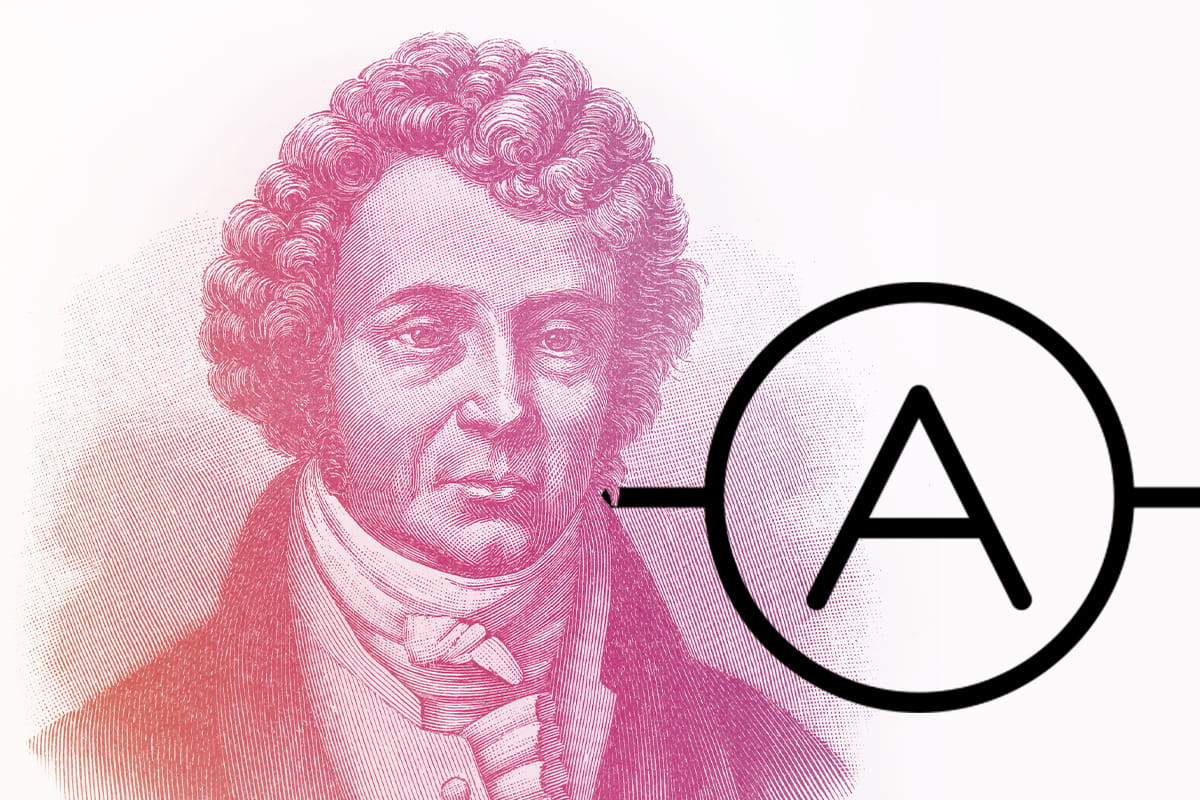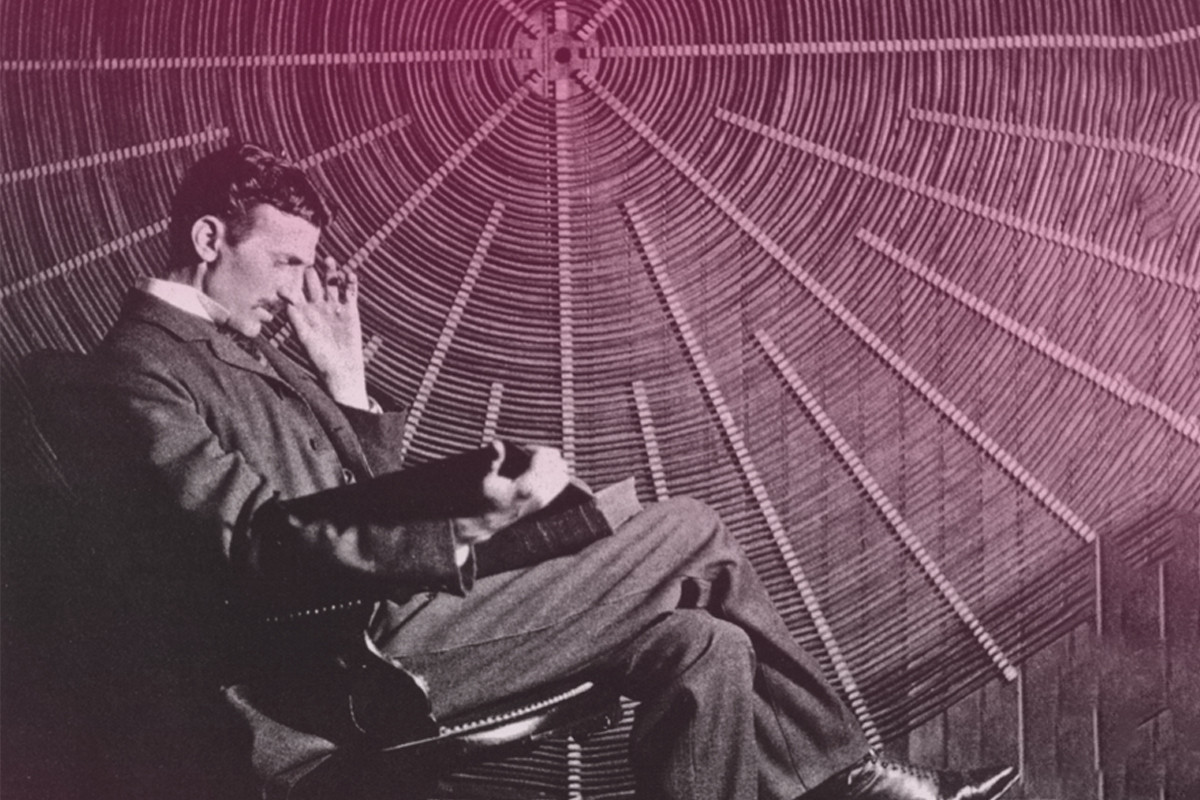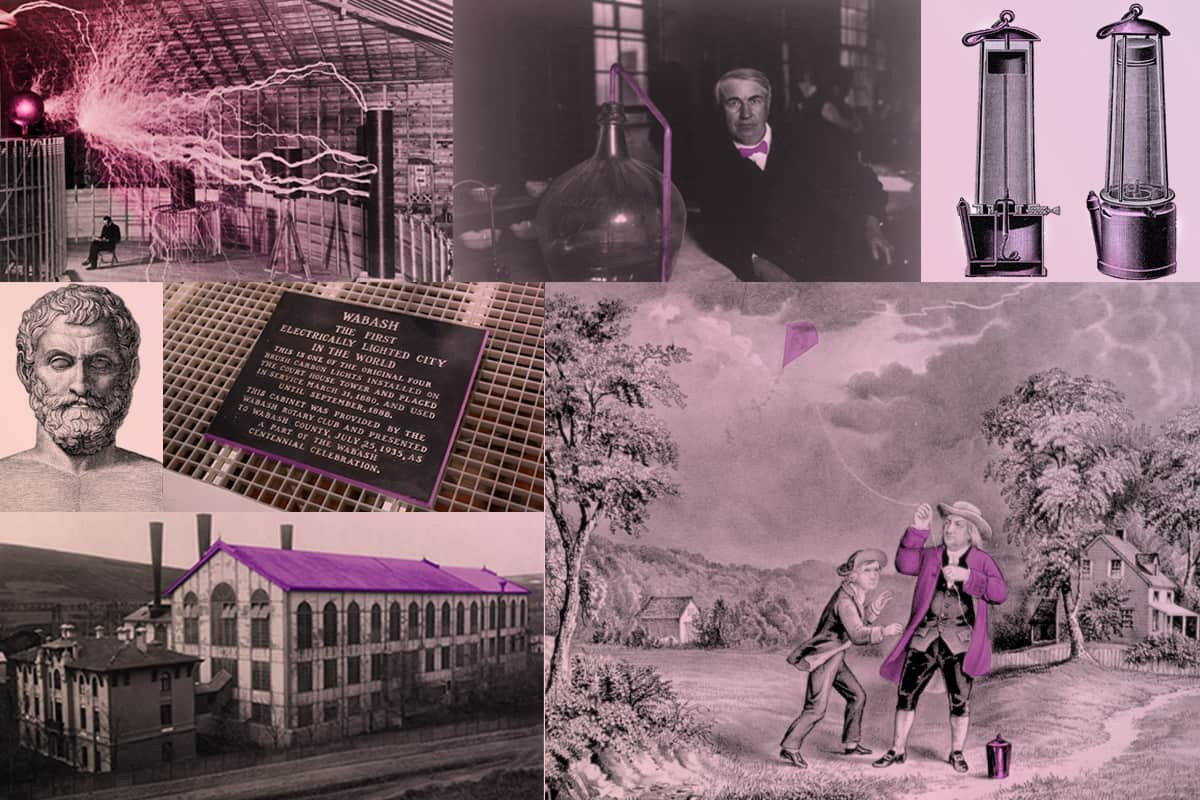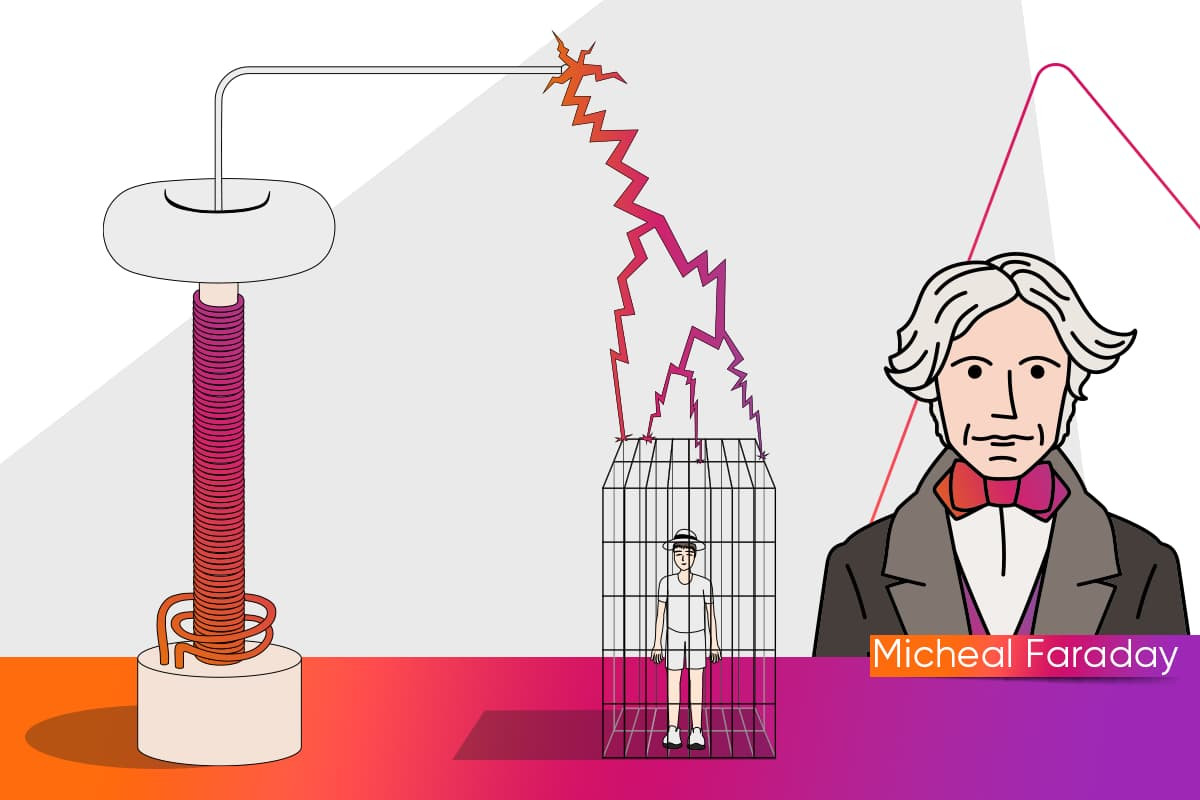
What is in this article?
André-Marie Ampère is one of those scientists who made history with his work in physics, chemistry and electricity. He still inspires many scientists today, having invented the solenoid coil and the electric telegraph.
If you want to know more about the life of French physicist and mathematician Ampère and his place in the world of science, check out the details to learn more about him.
Who is André-Marie Ampère?
André-Marie Ampère was a French scientist who lived from the late 18th to the early 19th century. Born in Lyon, France on January 20, 1775, Ampère got acquainted mathematics early on under the influence of his father, who was also a mathematician. His father was a bookseller and writer, and his mother died at a young age. He was interested in mathematics and physics and was particularly influenced by the mathematical analyses of Joseph-Louis Lagrange.
After graduating in 1799 he began teaching and mathematics and physics. Later, in 1809 he became a professor at the University of Paris, a position he held for 27 years.
André-Marie Ampère was an important figure in the French Revolution and an admirer of the famous philosopher Jean-Jacques Rousseau. Among his contemporaries, his work attracted much attention because of his reflections on human nature, the nature of society and political institutions. The French Revolution, which broke out in André-Marie Ampère's youth, greatly influenced the famous scientist's life. In particular, his father was sentenced to the guillotine for opposing new political movements. This hurt André-Marie Ampère deeply causing him to suspend his studies for a while.
During his studies, he began to investigate the fundamentals of electromagnetism and conducted a series of experiments on magnetic interactions. As a result of these studies, he developed Ampere's law, which describes magnetic interactions mathematically. He also developed mathematical definitions of magnetic fields. These studies of his contributed significantly to the development of electromagnetic wave theory, which explains the relationship between electric current and magnetic field. All these novelties laid the foundation for the invention of electricity.
Ampère also worked in the field of optics. His work established that light is generated and propagated by electric and magnetic fields. He also investigated optical phenomena such as the polarization and refraction of light.
In addition to his scientific work, Ampère also attached great importance to his family and society. He married in 1802 and had five children. He also worked as an actor and director at a local theater. Ampère also actively campaigned for social justice and was especially opposed to imprisonment. In 1830, Ampère resigned his position at the Collège de France, but continued his scholarly work and published numerous articles until his death.
André-Marie Ampère's Education
Quite colorful and full of achievements, André-Marie Ampère's education began in Lyon, his hometown.
He self-educated himself in mathematics and philosophy, subject he was interested in from an early age. Since his father was also a mathematician, he became familiar with mathematics from an early age.
He later enrolled at the Collège de la Trinité in Lyon and studied Latin, Greek, philosophy and mathematics. The education he received gave him the opportunity to get further ahead in mathematics. Ampère then moved to Paris and attended the famous mathematics school Ecole Polytechnique, where he studied mathematics, physics and chemistry. Here he learned from such famous scientists as Joseph Louis Lagrange, Pierre-Simon Laplace and Gaspard Monge. Ampère was particularly gifted in mathematics and mechanics, and this talent caught the attention of his teachers.
In 1801, Ampère was appointed professor of mathematics and physics at the Collège de France. In this position, his interest in magnetism and electricity grew. In 1820 he discovered through his experiments that electric current produces a magnetic field. This discovery became one of the most important discoveries that contributed to the understanding of the relationship between electricity and magnetism.
He received many awards for his contributions to science. In 1826 he was elected a Fellow of the Royal Society and in the same year he was admitted to the French Academy of Sciences.
Today, Ampère's name is associated with ampere, one of the units used in the theory of electromagnetism. André-Marie Ampère made important contributions to modern physics and engineering with his discovery of the relationship between magnetism and electricity along with his theory of electromagnetism. His work formed the basis for many theories still in use today.
His achievements during his education and his work in his field made him a world-renowned scientist. Ampère worked passionately throughout his education, especially in mathematics, making many discoveries and significant contributions to developments in his field.
André-Marie Ampère's Contributions to The World of Science
Ampère is known for his work and important discoveries in the field of electromagnetism. His work to understand the relationship between electricity and magnetism forms the basis of modern theories of electricity and magnetism.

Here are some of Ampere's inventions:
- The Electromagnet: He discovered that he could create a magnetic field with an electric current. This discovery led to the invention of the electromagnet. An electromagnet is a device that produces a magnetic field when an electric current flows. This invention formed the basis of modern electromagnetic theory.
- Ampere’s Law: He discovered Ampere's law, which describes the electromagnetic field. This law states that the magnetic field depends on the current density in the wires of an electromagnet.
- Ampere Scale: He developed the Ampere scale, used to measure the intensity of electric current.
- Electromagnetic Theory: He played a significant role in the development of electromagnetic theory. He discovered the relationship between electricity and magnetism and developed a theory that explained this relationship.
Ampère's discoveries form the basis of the modern theory of electricity and magnetism, which is still used today.
What Is Ampere's Law?
Ampere's law is a physical law that states that a magnetic field depends on the sum of currents (electric charges) along a given path. This law is one of the fundamental laws in the field of electromagnetism.
Ampere's law states that the magnetic field depends on the current density in the wires of an electromagnet. The direction of a magnetic field is located perpendicularly to an imaginary line (Ampere's loop) passing through a closed loop, Ampere's loop.
This law is used in the calculation of the magnetic field while explaining the motion of the waves of the magnetic field. It forms the basis of electromagnetic theory and has a wide scope of applicability such as measuring, generating and controlling magnetic fields. Inventions such as the Faraday cage have so much to thank this law.
By analyzing the attraction and repulsion of magnetic poles, Ampère also established how the poles affect each other. Ampère's laws, used to calculate the magnetic field of electric current, are among the basic principles of electromagnetism. These laws are still used in electrical engineering and magnetism today.

André-Marie Ampère’s Works and Distinctions
Ampère, who received numerous honors for his works and discoveries was elected a member of the French Academy of Sciences in 1824. He also received numerous honors, including the Legion of Honor, France's highest academic award. He became a world-renowned scholar for his research.
Ampère's important works include Mémoire sur la théorie mathématique des phénomènes électrodynamiques (A treatise on the mathematical theory of electrodynamic phenomena).
André-Marie Ampère’s Work on Electromagnetism
Andrè Marie Ampère discovered that magnetic fields are affected by electric fields, making it one of the foundations of electromagnetic theory. He also discovered that magnetic force is caused by rotation along magnetic field lines.
Ampère's work on electromagnetic theory gave its name to ampere, one of the units still in use today. In addition, Ampère made an important contribution to the development of electromagnetic theory with his laws explaining the interaction of magnetic fields.
In addition to electromagnetic theory, he was also concerned with electrostatics, magnetostatics and electrodynamics. An experimental work on a new principle of the direction of electric currents was also among Ampère's important works. All these works made Ampère a scientist who made an important contribution to the development of the theory of electromagnetism.
André-Marie Ampère and the Discovery of Fluorine
Although Ampère is known for his work on electromagnetism, his discoveries were not limited to that. In 1810 he also discovered the element fluorine.
Fluorine is the element that gave its name to a gold coin called fluorine today. While working with the Ampere scale, a device for measuring magnetic interactions, Ampere noticed that a magnetic current affects a substance called fluorine.
He began studying the properties of the element fluorine and discovered that this element can change its magnetic properties by interacting with magnetic fields. Thanks to this discovery, he succeeded in chemically separating the element fluorine and was the first scientist to study the properties of the element in detail.
Ampère's discovery of the element fluorine aroused great interest in the scientific world at the time. Because the element fluorine has different properties from other elements, this was considered an important step towards understanding the behavior of the elements.
The discovery of the element fluorine also had a great impact on the field of chemistry. At that time, the properties and behavior of elements in chemistry were still unexplored. Ampère's discovery introduced the idea that elements in chemistry can have different properties, an important impetus for the study of the properties of the elements.

Little known facts about André-Marie Ampère
Here are some interesting facts about André-Marie Ampère that are not very well known:
- He studied Latin, Greek, philosophy and mathematics at the Collège de la Trinité in Lyon. None of his teachers were mathematicians, and his excelling in mathematics was entirely his own endeavor.
- The unit ampere was named after Ampère, the unit for electric currents, a testimony to his work in the field of electromagnetic theory.
- His work includes laws describing the interaction of magnetic fields that are still used today.
- He used three-dimensional drawings to illustrate mathematical objects. This method is widely used today in computer graphics and other technologies.
- He was also interested in music and served as a conductor on several occasions.
- Ampère's name is up there with 72 famous names engraved on the Eiffel Tower.
In our articles you can take a closer look at the lives of famous scientists like Nikola Tesla and Thomas Edison, whom André-Marie Ampère inspired thanks to his contributions to science.

 Online Services
Online Services Application Inquiry
Application Inquiry Pay Assurance Fee
Pay Assurance Fee Query Installation Number
Query Installation Number Compensation Fee Inquiry
Compensation Fee Inquiry Automatic Payment Order Inquiry
Automatic Payment Order Inquiry Partnership
Partnership







Leave a Comment